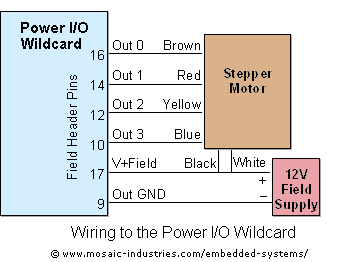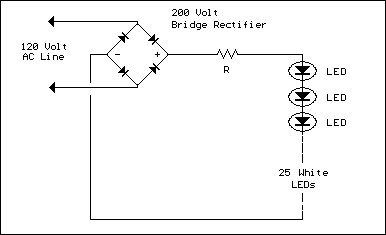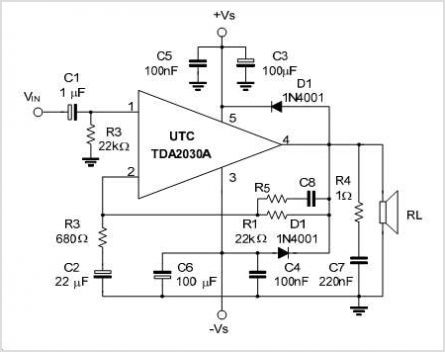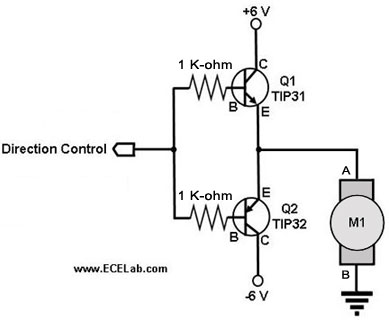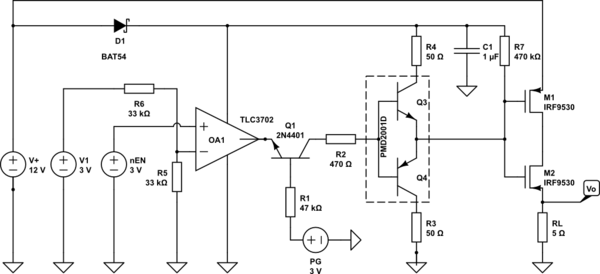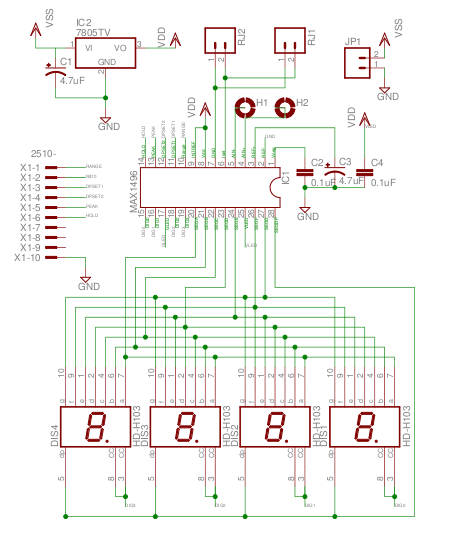
Q-Switch Driver
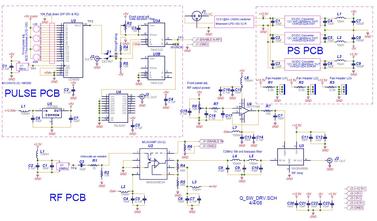
The Q-Switch driver for an old YAG laser failed. A replacement was over $1000, so a custom driver was built for less than $300 (see picture and schematic below). The specifications required were at least 20W into a 50-ohm load at 68MHz. The repetition rate needed to be adjustable between 100Hz and 100kHz and include a TTL output for synchronizing with other equipment. Creating an RF amplifier was a new challenge. A 3.3V CMOS oscillator, CPPC4-LT5RP ($8.14), was ordered and programmed for 68.000MHz. Although the square wave oscillator performed well, it could not drive a 50-ohm load. To address this, the oscillator was AC coupled to a MAX4258 video driver/multiplexer. The AC coupling centered the oscillator at ground, allowing the driver to handle a 50-ohm load. The multiplexer was utilized to quickly disable the oscillator for approximately 6 microseconds to Q-switch the laser. To convert the square wave into a sine wave, a filter was implemented to block frequencies above the fundamental. The software for designing the filter was user-friendly and free, resulting in a 5th order low-pass filter that effectively blocked frequencies above 72MHz, allowing the 68MHz fundamental to pass while significantly attenuating harmonics (e.g., the third harmonic at 204MHz was attenuated by 50dB). This produced a 68MHz sine wave at about 3V peak-to-peak (13dBm). However, to achieve the required 20W output (43dBm), the RA30H0608 amplifier was sourced ($73), which operates in the range of 68-88MHz, with a 30W output and a 12V power supply. The amplifier includes a gate pin for modulation. A trim pot was used to set a DC voltage, buffered with an op-amp configured as a voltage follower, to control the gain at the gate pin. The RF turn-off via the gate pin was slow (approximately 10 microseconds), so the multiplexer on the video driver IC managed the RF on/off switching (around 200 nanoseconds). A SWR/Watt-meter (MFJ-872, $100) was purchased to adjust the trim pot for achieving 20W from the amplifier. A TTL input to the MAX4258 was used for RF modulation.
The laser's repetition rate needed to be adjustable (100Hz-100kHz) and could also be controlled by an external TTL input. A simple solution was implemented using a programmable counter to allow user input for the time between laser pulses. The CD4059 counter received time inputs from BCD thumbwheel switches, with a 1MHz oscillator providing the time base (1 microsecond per count on the thumbwheel). The counter output (or an external TTL input) activated a 74HC123 one-shot to generate a pulse approximately 6 microseconds long (adjustable via a trim pot). The one-shot output triggered the MAX4258 multiplexer on the RF board and drove a 74LS241 buffer to provide a TTL output for other equipment.
The RF amplifier requires 12V at 4-5A to produce 20W (approximately 40% efficiency). A 100W, 12V switching supply was acquired for $56. The RF board also required +5V, -5V, and +3.3V, which were generated using DC/DC converters on a separate power supply board to convert the 12V supply. Additionally, headers were added to connect 12V fans (one for cooling the RF amplifier heatsink and another for circulating air through the enclosure to cool the switching supply). All integrated circuits (ICs) were decoupled from the power supply using bypass capacitors. The RF board was compact, utilizing surface-mount technology (SMT) components with capacitors placed close to the parts. Many RF components included small inductors in series with the power supply to filter out high frequencies. The trim pot controlling the RF amplifier gain was low-pass filtered at both the trim pot and the gate pin to eliminate noise. A setup for producing single-sided PC boards was established, allowing for in-house manufacturing of the boards, which facilitated prototyping. Ideally, the RF board would be smaller with multi-layer construction for improved performance.The Q-Switch driver for an old Yag laser died. A replacement was >$1000 so we built our own for <$300 (picture and schematic below). The specs were >= 20W into a 50 ohm load at 68MHz. The rep rate had to be adjustable between 100Hz and 100KHz and have a TTL output to synchronize the output with other equipment. I had never made a RF amplifier befo re so for me that would be the tricky part. I started by ordering a 3. 3V CMOS oscillator, CPPC4-LT5RP ($8. 14), from and having them program it for 68. 000MHz. The square wave oscillator worked well but couldn`t drive a 50 ohm load. I AC coupled the oscillator to a MAX4258 video driver/multiplexer. The AC coupling centered the oscillator at GND and the driver can drive a 50 ohm load. The multiplexer will later be used to quickly turn off the oscillator for about 6us (to q-switch the laser). If I block all frequencies above the fundamental I can turn a square wave into a sine wave. An article on DDS IC`s in Circuit Cellar pointed me to The filter software was easy to use and free. I was able to make a 5th order low-pass to block everything above 72Mhz. The 68MHz fundamental will pass but all the harmonics will be attenuated (Ex: The third harmonic, 204MHz, is attenuated by 50db).
Now I have a 68MHz sine wave that`s about 3Vpp (13dbm). Note: I need 20W (43dbm). We searched around and found the RA30H0608 from ($73). Its specs are 68-88MHz, 30W output, 12V power supply, and it has a gate pin to modulate the output (i. e. control the gain). I used a trim pot to set a DC voltage, buffered it with an op-amp configured as a voltage follower, and sent it to the gate pin on the amplifier to control the gain.
Note: Turning the RF off via the gate pin was slow (about 10us) so I used the mux on the video driver IC to turn the RF on and off (about 200ns). I purchased a SWR/Watt-meter (MFJ-872 from for $100) and adjusted the trim pot to get 20W from the amp.
A TTL input to the MAX4258 is used to modulate the RF. This takes care of the RF section. Pictures of the RF board are shown below. The rep-rate of the laser had to be adjustable (100Hz-100KHz using the internal circuitry) and have the option of being controlled by an external TTL input. I decided to keep it simple. Instead of using a DDS chip or a microcontroller to allow for frequency input I used programmable counter to let the user input the time between laser pulses.
The user enters the time into the CD4059 counter using BCD thumbwheel switches. A 1MHz oscillator provides the time base (1us per # set on the thumbwheel). The counter output (or an external TTL input) drives a 74HC123 one-shot to provide a pulse that`s about 6us long (adjustable with a trim pot). The output of the one-shot is used to trigger the MAX4258 multiplexer on the RF board and also drive a 74LS241 buffer to provide a TTL output for other equipment.
Pictures of the logic circuit board are shown below. The RF amp needs 12V@4-5A to produce 20W (about 40% efficient). I bought a 100W, 12V switching supply from for $56. The RF board also needed +5V, -5V, & +3. 3V. I used DC/DC converters on a separate power supply board to convert the 12V supply to the needed voltages. I also added headers to run 12V fans (one to blow air across the RF amp heatsink and one to circulate air through the enclosure to cool the switching supply).
Pictures of the power supply pcb are shown below. All IC`s are decoupled from the power supply with bypass caps. The RF board is small and uses SMT parts with caps very close to the parts. In addition, most of the RF parts have small inductors in series with the power supply to help filter out high frequencies. The trim pot that controls the gain on the RF amp is low pass filtered at the trim pot and again at the gate pin to remove any noise.
We have a setup to make single sided PC boards so I mad the boards in house (easier for prototyping). Ideally the RF board would be smaller with multi 🔗 External reference
The laser's repetition rate needed to be adjustable (100Hz-100kHz) and could also be controlled by an external TTL input. A simple solution was implemented using a programmable counter to allow user input for the time between laser pulses. The CD4059 counter received time inputs from BCD thumbwheel switches, with a 1MHz oscillator providing the time base (1 microsecond per count on the thumbwheel). The counter output (or an external TTL input) activated a 74HC123 one-shot to generate a pulse approximately 6 microseconds long (adjustable via a trim pot). The one-shot output triggered the MAX4258 multiplexer on the RF board and drove a 74LS241 buffer to provide a TTL output for other equipment.
The RF amplifier requires 12V at 4-5A to produce 20W (approximately 40% efficiency). A 100W, 12V switching supply was acquired for $56. The RF board also required +5V, -5V, and +3.3V, which were generated using DC/DC converters on a separate power supply board to convert the 12V supply. Additionally, headers were added to connect 12V fans (one for cooling the RF amplifier heatsink and another for circulating air through the enclosure to cool the switching supply). All integrated circuits (ICs) were decoupled from the power supply using bypass capacitors. The RF board was compact, utilizing surface-mount technology (SMT) components with capacitors placed close to the parts. Many RF components included small inductors in series with the power supply to filter out high frequencies. The trim pot controlling the RF amplifier gain was low-pass filtered at both the trim pot and the gate pin to eliminate noise. A setup for producing single-sided PC boards was established, allowing for in-house manufacturing of the boards, which facilitated prototyping. Ideally, the RF board would be smaller with multi-layer construction for improved performance.The Q-Switch driver for an old Yag laser died. A replacement was >$1000 so we built our own for <$300 (picture and schematic below). The specs were >= 20W into a 50 ohm load at 68MHz. The rep rate had to be adjustable between 100Hz and 100KHz and have a TTL output to synchronize the output with other equipment. I had never made a RF amplifier befo re so for me that would be the tricky part. I started by ordering a 3. 3V CMOS oscillator, CPPC4-LT5RP ($8. 14), from and having them program it for 68. 000MHz. The square wave oscillator worked well but couldn`t drive a 50 ohm load. I AC coupled the oscillator to a MAX4258 video driver/multiplexer. The AC coupling centered the oscillator at GND and the driver can drive a 50 ohm load. The multiplexer will later be used to quickly turn off the oscillator for about 6us (to q-switch the laser). If I block all frequencies above the fundamental I can turn a square wave into a sine wave. An article on DDS IC`s in Circuit Cellar pointed me to The filter software was easy to use and free. I was able to make a 5th order low-pass to block everything above 72Mhz. The 68MHz fundamental will pass but all the harmonics will be attenuated (Ex: The third harmonic, 204MHz, is attenuated by 50db).
Now I have a 68MHz sine wave that`s about 3Vpp (13dbm). Note: I need 20W (43dbm). We searched around and found the RA30H0608 from ($73). Its specs are 68-88MHz, 30W output, 12V power supply, and it has a gate pin to modulate the output (i. e. control the gain). I used a trim pot to set a DC voltage, buffered it with an op-amp configured as a voltage follower, and sent it to the gate pin on the amplifier to control the gain.
Note: Turning the RF off via the gate pin was slow (about 10us) so I used the mux on the video driver IC to turn the RF on and off (about 200ns). I purchased a SWR/Watt-meter (MFJ-872 from for $100) and adjusted the trim pot to get 20W from the amp.
A TTL input to the MAX4258 is used to modulate the RF. This takes care of the RF section. Pictures of the RF board are shown below. The rep-rate of the laser had to be adjustable (100Hz-100KHz using the internal circuitry) and have the option of being controlled by an external TTL input. I decided to keep it simple. Instead of using a DDS chip or a microcontroller to allow for frequency input I used programmable counter to let the user input the time between laser pulses.
The user enters the time into the CD4059 counter using BCD thumbwheel switches. A 1MHz oscillator provides the time base (1us per # set on the thumbwheel). The counter output (or an external TTL input) drives a 74HC123 one-shot to provide a pulse that`s about 6us long (adjustable with a trim pot). The output of the one-shot is used to trigger the MAX4258 multiplexer on the RF board and also drive a 74LS241 buffer to provide a TTL output for other equipment.
Pictures of the logic circuit board are shown below. The RF amp needs 12V@4-5A to produce 20W (about 40% efficient). I bought a 100W, 12V switching supply from for $56. The RF board also needed +5V, -5V, & +3. 3V. I used DC/DC converters on a separate power supply board to convert the 12V supply to the needed voltages. I also added headers to run 12V fans (one to blow air across the RF amp heatsink and one to circulate air through the enclosure to cool the switching supply).
Pictures of the power supply pcb are shown below. All IC`s are decoupled from the power supply with bypass caps. The RF board is small and uses SMT parts with caps very close to the parts. In addition, most of the RF parts have small inductors in series with the power supply to help filter out high frequencies. The trim pot that controls the gain on the RF amp is low pass filtered at the trim pot and again at the gate pin to remove any noise.
We have a setup to make single sided PC boards so I mad the boards in house (easier for prototyping). Ideally the RF board would be smaller with multi 🔗 External reference
